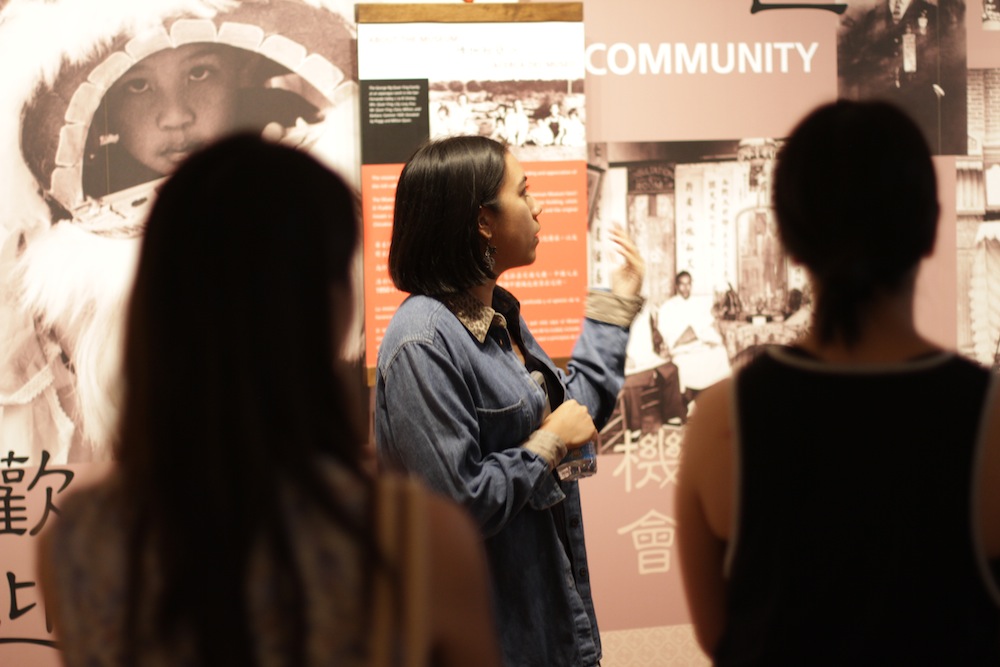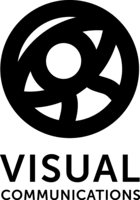VC Summer '17 Intern Jacy Duan Visits the Chinese American Museum
/Summertime is usually an exciting time for Visual Communications (VC), as we bring aboard students from different schools to be part of the VC Family. Learn more about VC Archives Intern Jacy Duan and her thoughts on the intern field trip to the "Roots: Asian American Movements in Los Angeles 1968-80s" at the Chinese American Museum.
Tell us about yourself.
JACY: I’m Jacy, and I’m going to be a freshman at Princeton in the fall and I’m really excited. I just graduated from Arcadia High School this June. One of the biggest things I love doing is performance and writing. I especially love film, and how Visual Communications helps empower underrepresented communities to give those communities a voice through film. That’s something I really love and hope to do in the future.
How did you get involved with VC?
I’ve kind of been within the Asian American community, I found out about it two years ago through a teacher. I started doing work with Artists at Play, which is an Asian American Theatre Collective in LA, and they introduced me to VC and other groups like East West Players. I’ve kind of done volunteer work for East West and attended the LA Asian Pacific Film Festival, and that’s how I found out about Visual Communications.
What do you do here at VC?
I work with the archives. Abe assigns interviews from Duane Kubo for me to transcribe. They’re interviews of various leaders within the Japanese American community, like Mike Murase and David Murakawa, who worked on Gidra. I also help to digitize all of the films from the archives for the "At First Light" exhibit, and write blog posts.
Is there an interview or a photo scan that has really stood out to you?
It was really interesting listening to all the interviews and hearing what they have to say. For example, Mike Murase talked a lot about how he helped plan rallies at UCLA and for anti-war protests. In history books we hear about the Vietnam War more from the side of white people and their protests (e.g., the hippies), and I was able to hear about it from the side of Asian Americans; people who were dying in Vietnam that looked like us. It was interesting to hear what people thought and how they reacted to the war. I feel like I’m going through history but through a different lens.
Do you see performance art or filmmaking in your future? How do you see yourself in that space?
One of my biggest goals/dreams is to be able to create content, so I hope to work as a television writer or producer in the future. I want to be able to create content that is representative of traditionally underrepresented communities in America, to tell stories that that normally no one hears. Not on a smaller scale but to be able to produce popular media that really demonstrates to people stories that we normally don’t hear.
What is a good memory that you’ve had at VC?
I really loved getting to make the kazari. It was fun to be able to get together to cut and glue, and chill with the interns. It was the first time I’ve done arts and crafts in a really long time. Going to the Chinese American Museum was also a fun experience, since I’ve never been before.
Visiting the Chinese American Museum
by Jacy Duan
“How have we been denied this history—these heroes who look like us?” -Audrey Chan
The interns at VC recently took a field trip to the Chinese American Museum. For many of us, it was the first time we had ever ventured to the Garnier building which houses the museum. The building itself has historical significance—it is the oldest surviving Chinese building in the area, once serving as an unofficial city hall for the Chinese community.
As we stepped into the museum, I was immediately drawn to what was supposed to be an interactive exhibit for kids. There was a fake suitcase on the wall and pictures of various items such as toiletries, snacks, and clothes around it. Kids were supposed to “pack” the items they wanted to bring into their suitcase, only limited to six choices out of fifteen. The process was supposed to mirror the hardships new immigrants faced, arriving in a new land with nothing but a suitcase and a dream. The exhibit reminded me of my own parents and their similar experience as immigrants from China in the early 1990s. My mother arrived in Los Angeles with only some cash in her pocket, a few changes of clothing in her suitcase, and the hope that she could create a better life for her family.
With our guide, we walked through more exhibits displaying pictures of Chinatown, and then arrived in a room that served as a recreation of the Sun Wing Wo General Store and Herb Shop, an actual store that existed in the Garnier building until 1948. There was a letter-writing service there as many immigrants at that time were illiterate and needed others to help them pen letters home. I imagined how lonely many early immigrants must have felt, living in a foreign land, only connected to their hometowns through letters they could not even write themselves.
The last exhibit we visited was "Roots: Asian American Movements in Los Angeles 1968-80s." Many VC artifacts and archives were featured in the exhibit to demonstrate how film helped to advance the Asian American Movement. One poster showed a description of films that VC artists produced in the 1970s. I realized that many of the films’ themes are still relevant for Asian Americans today. As I walked past more photos of marches and demonstrations in the past, I noted not only how far we have come through the years, but also how much further we need to go. Many of our struggles today mirror struggles back then: equal representation and opportunity in the media, Asian American studies on college campuses, equality for women of all colors, etc.
As our battles continues today, we find inspiration in the heroes of the past who remind us that the Asian American narrative is one of bravery and resilience.





